In providing a broad overview of the hundreds of distinct American Indian cultures found in North America, it is common for museums, historians, archaeologists, and ethnologists to use a culture area model. This model is based on the observation that different groups of people living in the same geographic area often share many cultural features.
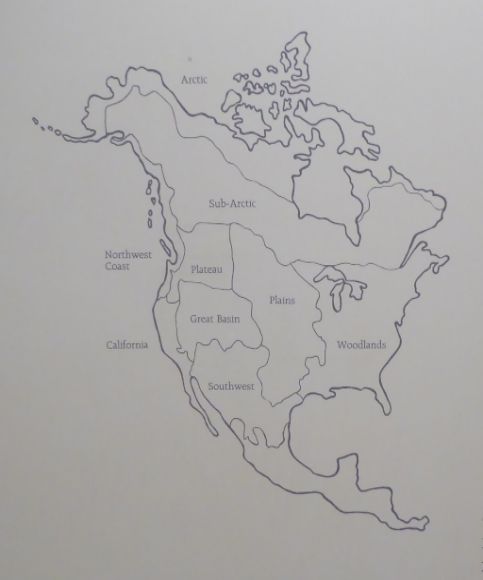 The map shown above displays the primary North American Indian culture areas.
The map shown above displays the primary North American Indian culture areas.
The Great Basin Culture Area includes the high desert regions between the Sierra Nevada and the Rocky Mountains. It is bounded on the north by the Columbia Plateau and on the south by the Colorado Plateau. It includes southern Oregon and Idaho, a small portion of southwestern Montana, western Wyoming, eastern California, all of Nevada and Utah, a portion of northern Arizona, and most of western Colorado. This is an area which is characterized by low rainfall and extremes of temperature. The valleys in the area are 3,000 to 6,000 feet in altitude and are separated by mountain ranges running north and south that are 8,000 to 12,000 feet in elevation. The rivers in this region do not flow into the ocean, but simply disappear into the sand.
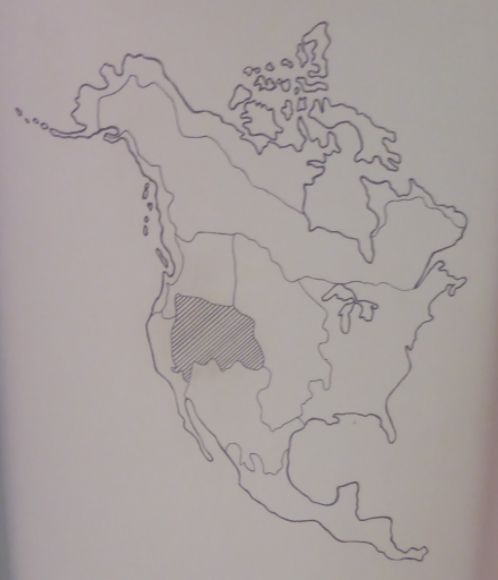 The shaded area on the map above shows the Great Basin culture area.
The shaded area on the map above shows the Great Basin culture area.
In their book The Wintu and Their Neighbors: A Very Small World-System in Northern California, Christopher Chase-Dunn and Helly Mann report:
“It is an ecologically sparse environment punctuated by small areas where water, game, and plant life are abundant.”
This is an area which seems inhospitable to human habitation, yet Indian people have lived here for thousands of years. This was the last part of the United States to be explored and settled by the European-Americans. In writing about the early Indian settlement of the Great Basin, archaeologist Jesse Jennings, in his book Prehistory of Utah and the Eastern Great Basin, notes:
“Effective human exploitation of the American Desert West requires rather intimate knowledge of a fairly large territory of several hundred square miles, a territory probably encompassing the full range of desert biomes or ecologic communities.”
The basic tribes of the Great Basin Culture Area include Bannock, Gosiute, Mono, Northern Paiute, Panamint, Shoshone, Southern Paiute, Washo, and Ute. In an article in American Archaeology, Christopher Morgan and Robert L. Bettinger report:
“Ethnographically, the region was inhabited by small, mobile bands of Ute, Paiute, and Shoshone hunter-gatherers who subsisted on a wide variety of plants and animals such as wild grass seeds, roots, rabbit, deer, bighorn sheep, insects, and especially piñon pine nut gathered in the fall.”
Linguistically all of the Indian people of the Great Basin, with the exception of the Washo, spoke languages which belong to the Numic division of the Uto-Aztecan language family. The Numic languages appear to have divided into three sub-branches—Western, Central, and Southern—about 2,000 years ago. About a thousand years ago, the Numic-speaking people expanded northward and eastward. The linguistic and archaeological data seem to suggest that the Numic-speaking people spread into the Great Basin from the Death Valley area of southeastern California. In an article in American Antiquity, Angus Quinlan and Alanah Woody report:
“Indications of a late Numic spread into the western Basin can be found in some Numic oral traditions, though other oral histories insist that Numic groups have occupied the Great Basin from the beginning of time.”
One Northern Paiute oral history tells of driving off an earlier group in western Nevada. A Southern Paiute oral tradition tells of an earlier group identified as the “Mukwic” who were responsible for the pictographs in the area.
Maryhill Museum of Art
The Maryhill Museum of Art near Goldendale, Washington, has a display of Great Basin artifacts.
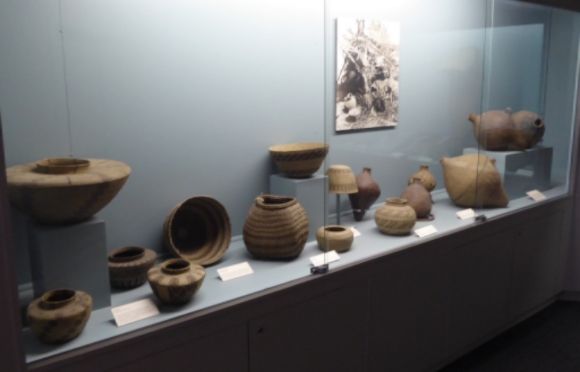

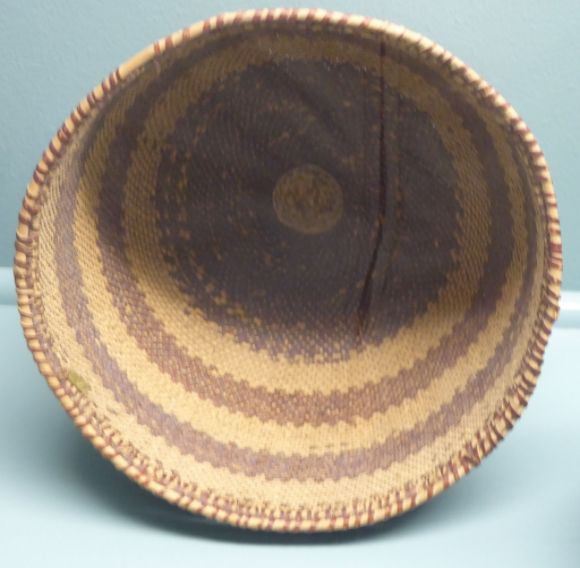 Shown above is a cooking basket: the basket would be filled with water and food and then hot rocks would be added. The rocks would be moved around in the basket to prevent them from burning the basket.
Shown above is a cooking basket: the basket would be filled with water and food and then hot rocks would be added. The rocks would be moved around in the basket to prevent them from burning the basket. 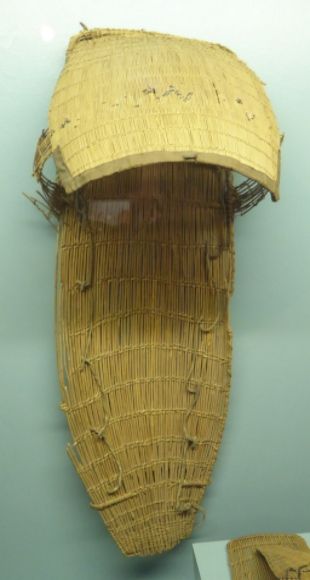 Shown above is a Paiute baby carrier.
Shown above is a Paiute baby carrier.
According to the Museum display:
“Paiute cradles were typically made of willow. Animal skin wrappings or straps were used to secure the baby to the board. A sun shade to shield the baby’s face was patterned differently depending on the baby’s sex. Boys’ cradles had a series of slanted parallel lines and girls had zigzag or diamond patterns.”
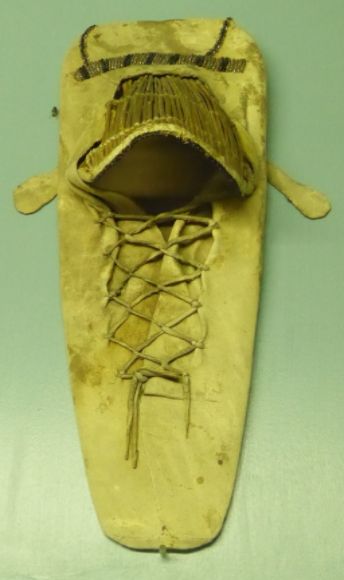 The Northern Paiute model baby carrier shown above was intended as a tourist trade item.
The Northern Paiute model baby carrier shown above was intended as a tourist trade item.  Shown above is a Paiute burden basket. This type of basket would be used to carry heavy loads such as firewood, gathered foods, and basketry materials.
Shown above is a Paiute burden basket. This type of basket would be used to carry heavy loads such as firewood, gathered foods, and basketry materials. 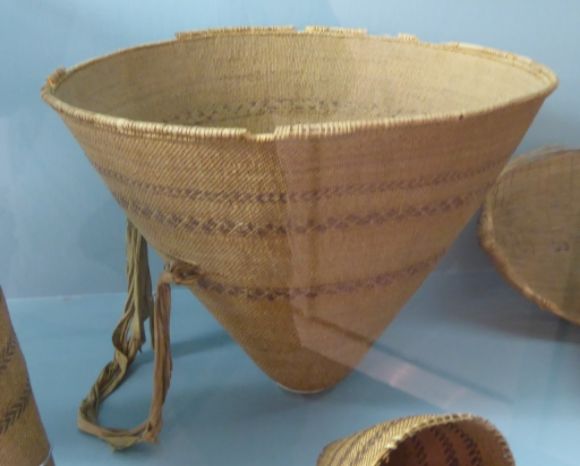 Shown above is a Paiute gathering basket with a tumpline which was placed on the forehead.
Shown above is a Paiute gathering basket with a tumpline which was placed on the forehead. 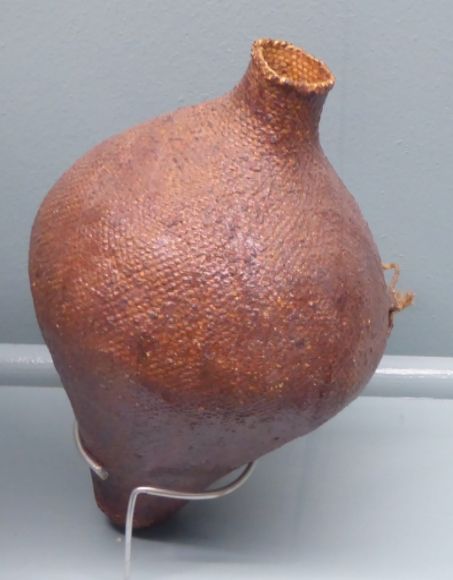 Shown above is a water jar.
Shown above is a water jar.
According to the Museum display:
“Small water jars were used as canteens by individuals, while large ones were used to carry and store water for the camp.”
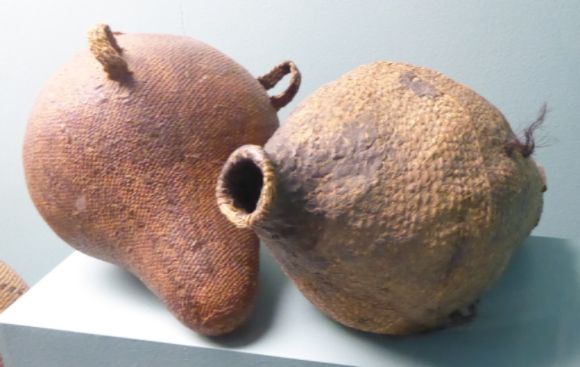 Shown above are Washoe water baskets which have been coated with piñon pine pitch to make them watertight.
Shown above are Washoe water baskets which have been coated with piñon pine pitch to make them watertight.
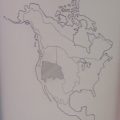
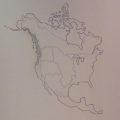
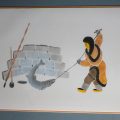
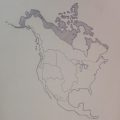
Leave a Reply